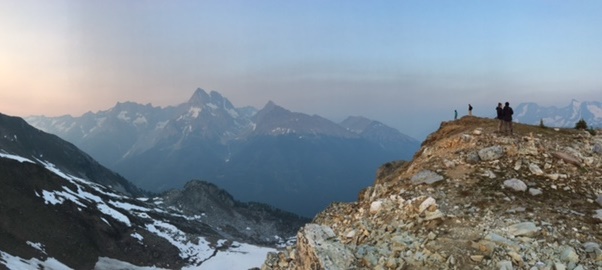
Our guide at the Ktunaxa Interpretive Center, Jared, led us down a long hallway that was warmly lit with refurbished wood fixtures and plush Oriental rugs padding the floors. The original bricks from the school were fighting through the dry wall and wallpaper. As he reconstructed what the fully-operative establishment would have looked like in our mental imagery, there was an evident melancholy that seemed to emanate from the architecture.
From 1908 until 1970, the St. Eugene Mission, later remembered as the Red Brick School, would take indigenous children from their Ktunaxa First Nation [too-na-ha] and strip them of their cultural upbringing and heritage through forced religious enculturation. Completely unqualified teachers of the Christian leadership would expel the children’s prior way of life, culture, and language through rigorous academics, familial and gender segregation, and even violence. With each generation, more of the Ktunaxa’s cultural knowledge and beliefs eroded. This ubiquitous assimilation practice across Canada was a means of European settlers gaining complete sovereignty and control of the land. Attendants of the school recall being beaten, separated from siblings, and returning home in the summer unable to speak the same language as their parents.
By the time this tragic establishment had its last students roam its classrooms and dormitories, the Ktunaxa still had an arduous battle to reclaim both the land and their culture. Now, the building is a year-round resort completely owned, managed, and operated by the Ktunaxa people, and Jared says his people are proud of that. However, their culture greatly suffered; their language is considered critically endangered, and their elders are dying along with the traditions and knowledge of their people. Through this relentless cultural genocide, relations between the Canadian government and the indigenous people of Canada are contentious, to say the least. You can still feel that resentment in the grim stories of Ktunaxa people relating their experiences at the Red Brick School. I left the Interpretive Center with a burdened heart and a genuine sense of the infringement of their rights and way of life.
The battle for Indigenous sovereignty and land rights with the Canadian government continues to this day. The area of focus–and the location of our final backpack excursion pivoted around the Jumbo Valley in the Purcell Mountains of British Columbia. For the past 25 years, there has been an ongoing conflict around the development of a proposed ski resort in the valley. Architect and developer Oberto Oberti and his team envision an enormous island of coffee shops, condos, lifts, and gondola rides. Meanwhile, conservationists, local residents, and the Ktunaxa First Nation are fighting relentlessly to protect this area permanently. To the Ktunaxa, Qat’muk (Jumbo Valley) is sacred to them and the Grizzly Bear Spirit. This reciprocal relationship between the people and the bears is fundamental to Ktunaxa history, and it guides their stewardship principles to the land. I strongly felt the sacrosanct effect of this landscape one evening we hiked up into the smoke-hazen peaks just behind our cabin, and the sheer immensity of the Purcell Mountains commanded my respect and reverence.
As has been the case for hundreds of years, the lack of recognition of indigenous sanctity and culture has threatened their land and way of life. It is difficult for people of a Westernized worldview to try to value a different worldview, and often this difference dictates decisions with ultimate disregard for different ways of knowing. Even as the Western world attempts to understand ‘traditional ecological knowledge,’ we are still doing an injustice to Native people by trying to harness and condense this knowledge using Western-derived concepts, words, and ideas. In order to begin this slow process of healing, we must first try to value Western knowledge and indigenous knowledge equally; these two divergent views should complement one another to better coexist in the same human and natural landscapes. Backpacking through Jumbo made me realize how little I actually know about the area. I respect that I will never be able to view the area in the same lens as the Ktunaxa. Yet, I know that protecting this beautiful valley will help preserve the knowledge about it indefinitely.